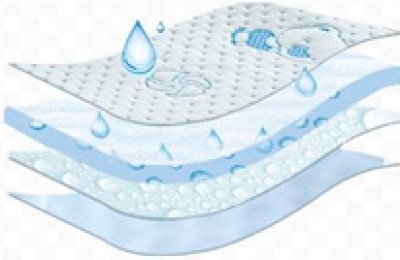The yarn is dyed into the chosen color before being woven. Generally used for fabrics, sweaters or directly using yarn, etc. Yarn dyeing is the basis of dyeing and weaving. Here’s how to dye yarn.
Characteristics of yarn dyeing
In the production process of textiles, at which stage is dyeing carried out? Affected by several factors.
From an economic point of view, dyeing is carried out at the front of the weaving production process, and its cost is the lowest. When dyeing yarns in the pre-weaving process, dyes with better fastness can be used, and some colors can be improved in subsequent weaving processes. Yarn dyeing can generally achieve good and firm leveling effects, and can be woven with natural yarns according to different design requirements, thereby obtaining higher economic value and shortening the delivery cycle, so the product has high reproducibility.
It is generally believed that compared with products obtained by fabric dyeing, products obtained by dyeing yarns have more advantages such as bulking and fuller feel. This may be because When the skein is suspended on the rod of the dyeing machine, it is free to fully relax without any restrictions, not only allowing the yarn to be fully bulked, but also allowing the yarn to untwist freely to achieve a balanced twist, thus eliminating the need for spinning time tension.
Another form of yarn dyeing is cheese dyeing. Technically speaking, it used to be considered that only hank dyeing could be produced. However, this traditional view is gradually changing with the emergence of cheese dyeing method.
Generally speaking, the cost of yarn dyeing is higher than that of fabric dyeing. However, because it has the advantage of fast delivery, it is easier to adapt to changes in popular colors and to meet the needs of small batches and multiple varieties. In addition, yarn dyeing machinery is relatively simple and therefore economical in terms of maintenance.
Yarn dyeing method
Yarn (including filament) dyeing has a history of nearly a thousand years, and hank dyeing has been used for a long time. It was not until 1882 that the world’s first bobbin dyeing patent was issued, and later beam dyeing appeared.
1. Hank yarn dyeing
Convert short fiber yarn or filament yarn into a frame of skein yarn connected together on the yarn shaker, and then skein yarn in each frame. The dyeing method of dip dyeing in this type of dyeing machine is skein dyeing.
2. Package dyeing
Put short fiber yarn or long The silk is wound on a bobbin full of holes (the winding density is required to be appropriate and uniform, generally called a “pine bobbin”), and then it is placed on the yarn carrier of the dyeing machine (also known as a flat plate, a hanging plate, a creel, etc. ) on the dyeing post (also known as yarn bamboo, spindle rod, insertion rod, etc.), put it into the package dyeing machine, and use the action of the main pump to make the dye liquid penetrate and circulate between the package yarns or fibers to achieve the dyeing process. The method is bobbin dyeing.
3. Beam dip dyeing
According to the requirements of the hue and quantity of the warp yarns of the colored fabric, in loose On the warping machine, the raw yarn is wound on the coiled tube with holes to form a loose warp beam (can be seen as a large bobbin), which is then installed on the yarn carrier of the dyeing machine and placed in the warp beam. In the dyeing machine, the action of the main pump is used to circulate the dye liquid between the warp beam yarns or fibers to achieve exhaust dyeing. The method of obtaining warp yarns with uniform color is called warp beam dyeing.
4. Warp beam pad dyeing
Warp beam pad dyeing is mainly used in the color warp and white weft The production and processing of denim. It introduces a certain number of thin shafts into each dyeing tank, and after repeated multiple immersions, multiple paddings, and multiple ventilation and oxidation, the dyeing of indigo (or vulcanization, reduction, direct, paint) dyes is achieved. After pre-drying and then sizing, the warp beam yarn with uniform color can be obtained, which can be directly used for weaving. The dye tanks during warp beam pad dyeing can be multiple (sheet machines) or one (ring machine). This equipment used in combination with sizing is called a sheet dyeing and sizing combined machine.
5. Yarn bundle pad dyeing (ball warp dyeing)
This is also a special dyeing method for denim warp yarns. The process is to first bundle 400 to 500 raw yarns into a ball shape, and then put several bundles (such as 12 bundles, 18 bundles, 24 bundles, 36 bundles) of yarn in multiple dyeing tanks, repeatedly dipping, rolling and ventilating them multiple times. After oxidation and dyeing with indigo dye, it is divided into warp and sizing. Acrylic tows can also be pad-dyed.
6. Special yarn dyeing methodMethod
Like fabrics, yarns are also partially dyed, such as knot printing, space dyeing, tie dyeing, printing, discharge dyeing, gradient, etc.
1 Stamped knots
According to the design requirements, print a small knot at a set distance on the spread yarn. (eg 0.5 ~ 1cm) color, can be the same color, but most of them are five colors. It must be noted that the spacing must be irregular and unequal, otherwise “turtle back” or “landscape painting” will appear on the canvas.
2 Section dyeing
Drop several dyes at different parts of the spread yarn at the same time. After vacuum suction or padding, then Fix color and wash. Compared with the printing section, the color sections are longer, the distance between the white yarns is smaller, and even two adjacent colors will appear “color matching” on the yarn. Space-dyed yarn is commonly used in knitted fabrics.
3 Tie dyeing
Tie up the part of the skein with a rope (or wrap it with plastic film), and then dip-dye it. As a result, it is tied up tightly. There are white spots everywhere, some color bleeding from deep to light in the bundled area, and the unbundled areas are evenly colored, giving the product a unique charm.
4 Printing (warp printing)
This method is generally used to produce warp printing woven fabrics. Patterns are printed on the warp yarns (not on the weft yarns), and the product style is hazy, looking like flowers but not flowers. When printing warp, you can first fake weave (knitting method is printing first and then warping, weaving method is warping-fake weaving-printing), or you can print directly on the warp yarn. For example, synthetic fiber warp yarn can be printed on a transfer printing machine.
5 Gradient dyeing
Gradient dyeing (colorful silk) dips different parts of the skein (silk) in the dye solution for different times to make each frame The yarn shows a gradient color from light to dark without obvious boundaries, such as traditional Chinese embroidery seven-color silk threads. In addition, there are half-side dyeing, spray-point dyeing, single yarn continuous dip dyeing, etc. </p







